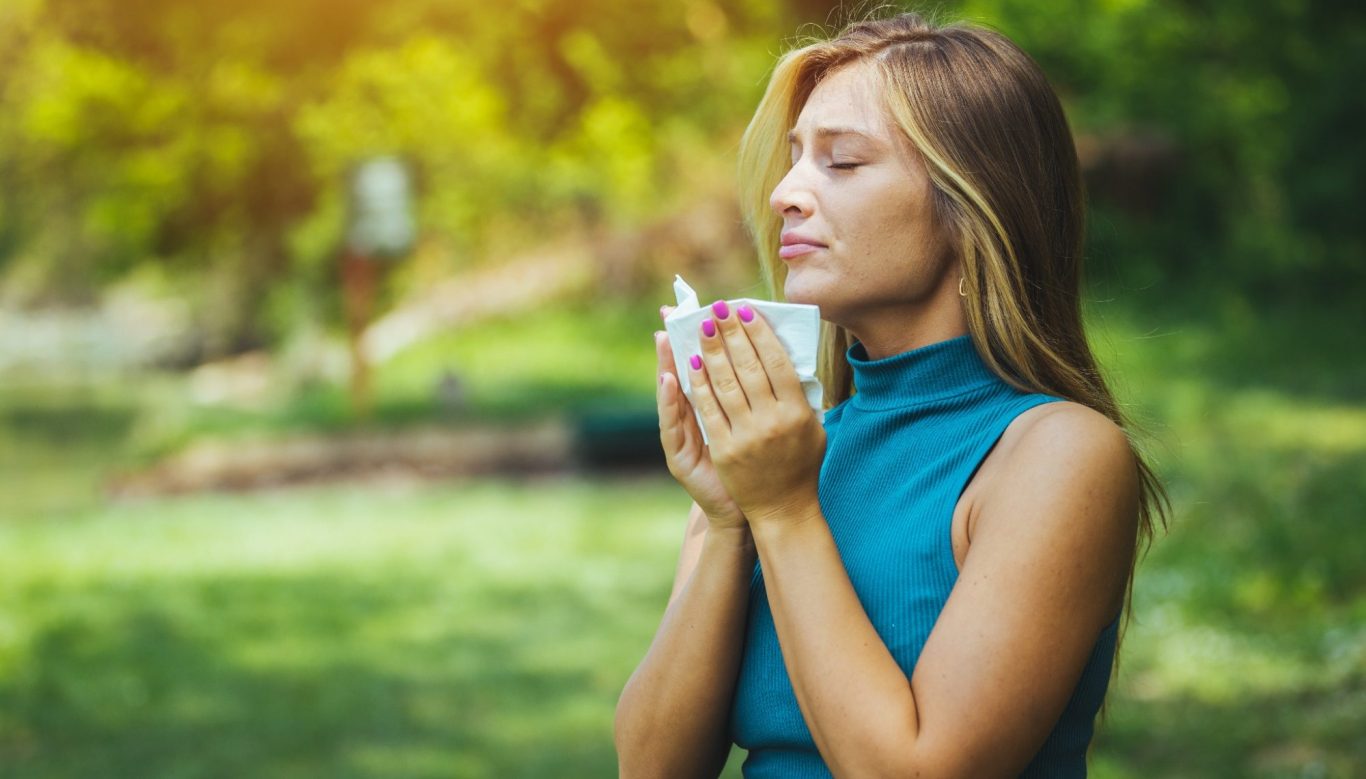About allergies and hay fever

So-called "hay fever" is a seasonal allergic rhinitis that usually occurs in spring and is caused by pollen from various plants that bloom at this time of year.
Around 15-40% of the population then complain of allergic reactions that sometimes last for weeks, such as a runny nose, sneezing, itchy eyes, coughing, and even shortness of breath and asthma attacks.
Such hay fever can be very stressful, even if it only occurs temporarily. It is precisely when nature finally blooms after the cold season and many plants are in full bloom that those affected are forced into their houses. For weeks they are sometimes unable to go outside into nature without symptoms.
But how does hay fever, an allergy to nature, arise in the first place? Is it perhaps another disease of civilization? And how can it be treated most effectively?
Like any other allergy, hay fever is a hypersensitivity reaction of the immune system. The immune system reacts to an actually harmless substance from our environment (in this case pollen) with a strong, exaggerated defensive reaction, which then leads to the corresponding symptoms. It is not possible to say with any certainty why the immune system of some people reacts so strongly allergically to these actually completely natural substances. However, the following causes are possible:
Since around 70% of our immune system, which is responsible for allergic reactions, is located in the intestines, it is possible that hay fever is related to damaged intestinal flora. It is also known that many illnesses, including some allergies, have their origin in the intestines.
The sterile and hygienic living conditions in which many people live today can also be responsible for our bodies reacting allergically to actually natural substances. For example, by spending too much time indoors, not getting enough fresh air, not getting much contact with nature, washing the skin too much, disinfecting the hands or frequently wearing face masks, our bodies are no longer used to contact with natural substances at this intensity and react allergically when these substances suddenly fly through the air in large quantities in spring.
Another factor that can promote the occurrence of hay fever is stress and emotional instability. It is no news that psychological stress has an influence on the course of many physically manifested illnesses. A study by University College London found that twice as many adults as children suffer from pollen allergies, which has been linked to the adults' perception of stress.
In order to alleviate and treat hay fever, you should of course first find out the cause and try to eliminate it. If, for example, you notice that your intestinal flora is disturbed, you could carry out a colon cleanse and observe how this affects the hay fever. If the cause of the allergy cannot be determined and therefore cannot be eliminated, here are some natural remedies that can help alleviate hay fever:
As pollen, i.e. allergens, fly through the air, they can settle in every corner imaginable and cause allergic reactions there. Therefore, make sure to change clothes, bed linen and towels regularly. During pollen season, you should also shower at least once a day and wash your hair thoroughly. As pollen often settles in the hair, you could also consider temporarily shaving your hair completely if the allergy is severe. Another option would be to wear a hat as soon as you leave the house. Wearing tight-fitting sunglasses can also prevent allergens from getting into your eyes and causing them to itch. It can also be helpful to wash your hands and face after being outside. Don't forget your eyebrows, where allergens also like to settle. Observations have shown that symptoms often occur less or not at all when those affected are in the forest. This is probably because pollen can hardly penetrate the forest through densely grown trees and bushes. In open fields, however, those affected often suffer from severe symptoms. It can also be helpful to pay attention to breathing deeply and calmly into the stomach during the day to give the body the feeling that everything is OK. Nasal irrigation and lung cleansing procedures (e.g. saline or herbal inhalation) also offer protection against allergens or remove them from the respiratory tract. Be aware that pollen can reach almost all areas of your house, your body and your respiratory tract via the air and make sure to clean all these areas regularly.
There are also some natural foods and herbs that can be consumed to alleviate symptoms. These remedies offer a natural alternative to so-called "antihistamines" (conventional allergy medications) that are often prescribed for hay fever or other allergies. Since the hormone histamine is partly responsible for the inflammatory, allergic reactions, it is a good idea to lower the histamine level. This can be achieved by consuming vitamin C, B6, zinc and copper. Foods that contain large amounts of histamine should be avoided during the pollen season. These include: meat, cheese, milk, fermented products and also tomatoes.
The following things can also help with hay fever: a diet rich in vitamin C and low in histamine, eating broccoli, green leafy vegetables, turmeric, rose hips, citrus fruits, elderberries, black currants, herbs such as nettle, parsley, thyme or butterbur and taking black cumin oil, spirulina algae and the right probiotics.
If it is not possible to combat the cause of the allergy, hay fever can be effectively treated with natural remedies in this way, so that those affected are not too limited in their quality of life despite the pollen season and taking medication is usually not necessary.
2025 Ceternal. All Rights Reserved.
Wir benötigen Ihre Zustimmung zum Laden der Übersetzungen
Wir nutzen einen Drittanbieter-Service, um den Inhalt der Website zu übersetzen, der möglicherweise Daten über Ihre Aktivitäten sammelt. Bitte überprüfen Sie die Details in der Datenschutzerklärung und akzeptieren Sie den Dienst, um die Übersetzungen zu sehen.
